Are you tired of deer destroying your garden every year? Do you want to enjoy the beauty of perennials without worrying about deer munching on them? Look no further! Here, we will guide you through everything you need to know about the best beautiful deer resistant perennials.
We will cover how these plants can add beauty to your landscape while keeping the pesky animals at bay. From understanding deer behavior and preferences to selecting the right location for your garden, we have got you covered. We have also listed 10 of the most beautiful deer-resistant perennials you can plant in your garden.
Lastly, we will also discuss maintenance and care tips for these perennials and some troubleshooting tips for common issues. Get ready to create a stunning garden that is both beautiful and practical.

Understanding Deer Behavior And Plant Preferences
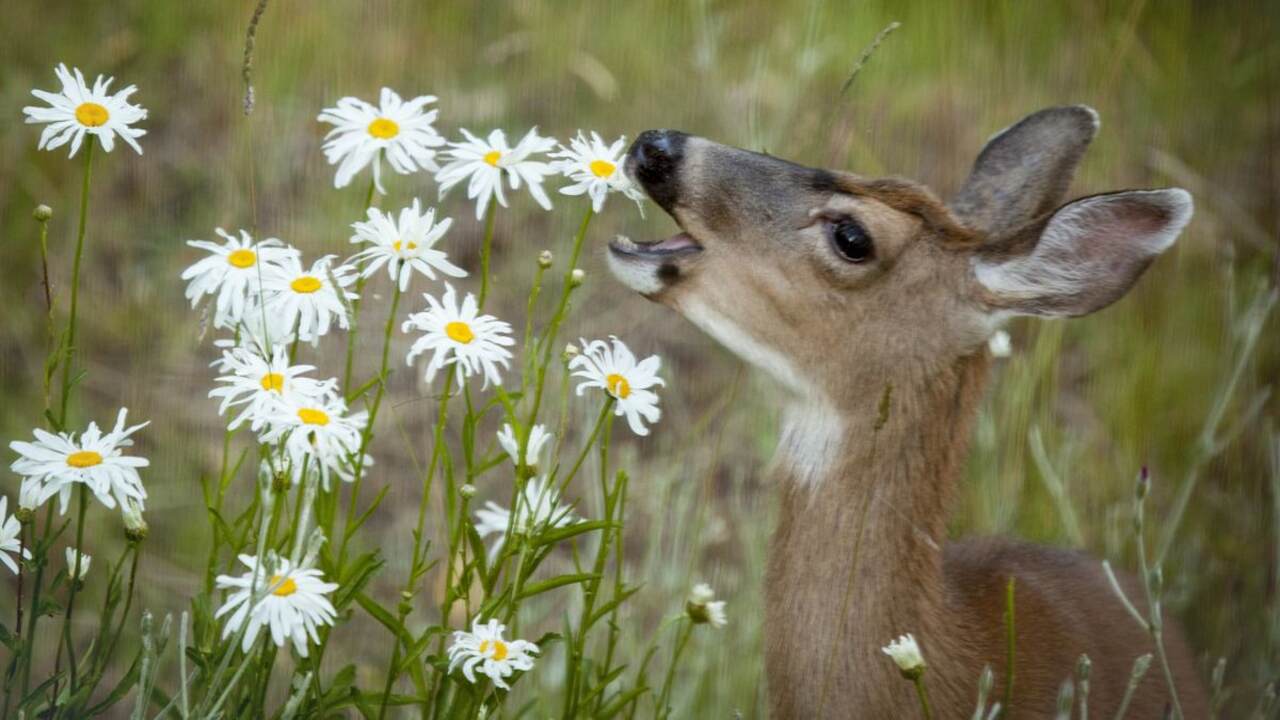
Deer have specific preferences when it comes to plants. They tend to target plants with tender, new growth during certain seasons. Understanding deer behavior and plant preferences can help you select the right deer resistant perennials for your garden.
Deer have a strong sense of smell and taste, so they are less attracted to plants with strong scents, bitter tastes, or prickly textures. They also tend to avoid plants with fuzzy leaves or strong flavors. By considering these factors, you can make informed choices when choosing deer resistant perennials for your garden.
Selecting The Right Location For Your Garden

When choosing a location for your garden, remember that it can greatly impact its vulnerability to deer damage. Opt for a spot that is not easily accessible to deer, such as away from wooded areas or nearby structures. You can also use fencing or other barriers to keep deer out of your garden.
Additionally, consider planting deer resistant perennials near less deer-resistant plants to provide a buffer. Selecting the right location can help reduce the likelihood of deer damage and enhance the effectiveness of these beautiful deer-resistant plants.
Designing A Deer Resistant Garden
When creating a deer-resistant garden, it’s important to consider using various perennials known to deter deer. You can create a visually interesting and dynamic garden by incorporating plants with different heights, textures, and bloom times.
Grouping deer-resistant perennials together can make protecting them from deer damage easier. Additionally, incorporating other deer-resistant features, such as repellent plants or physical barriers, can further enhance the effectiveness of your garden design. You can create a stunning and resilient deer-resistant garden with careful planning and selection.
10 Beautiful Deer Resistant Perennials
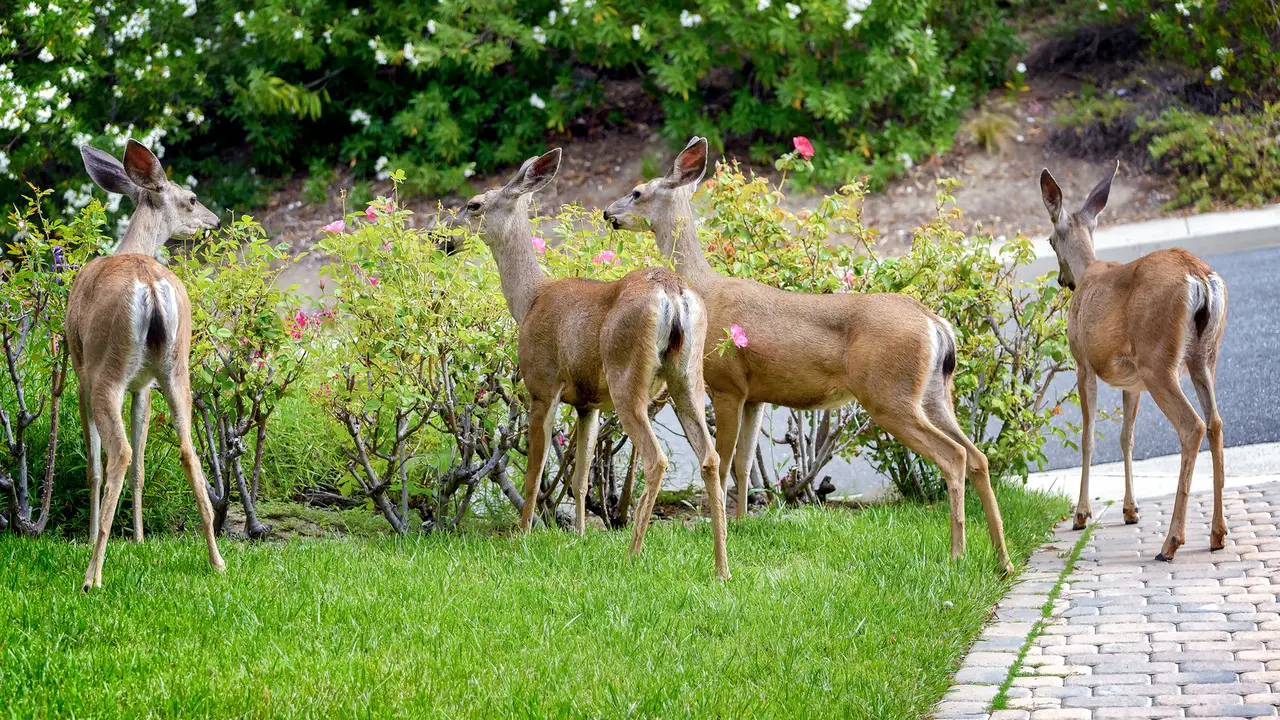
When creating a beautiful and vibrant garden, finding the right aesthetically pleasing and deer-resistant plants can be challenging. Luckily, there are several perennial options that not only add color and texture to your landscape but also deter deer from feasting on your prized blooms. Here are 10 beautiful deer resistant perennials to enhance your outdoor space’s beauty.
1. Daffodils
Daffodils, also known as Narcissus, are early-spring blooming flowers that add a splash of color to the garden. Their bright yellow, white, or orange blooms create a cheerful atmosphere. Daffodils are beautiful and deer-resistant, making them a great choice for gardens where deer are a concern. These perennials have a toxic nature, deterring deer from munching on them. Plant daffodils in well-drained soil and enjoy their vibrant display in early summer.
2. Lavender
Lavender is a top pick for any garden with its fragrant blooms and beautiful purple hues. This NLP term is a hardy perennial plant that thrives in sunny locations. Its green foliage adds a touch of elegance to the garden, and its flowers attract bees and other pollinators. Lavender is a great choice for a shade garden, as it can tolerate some shade but flourishes in full sun. With proper care and pruning, lavender can bloom from early summer to late summer, adding beauty and color to your garden.
3. Russian Sage
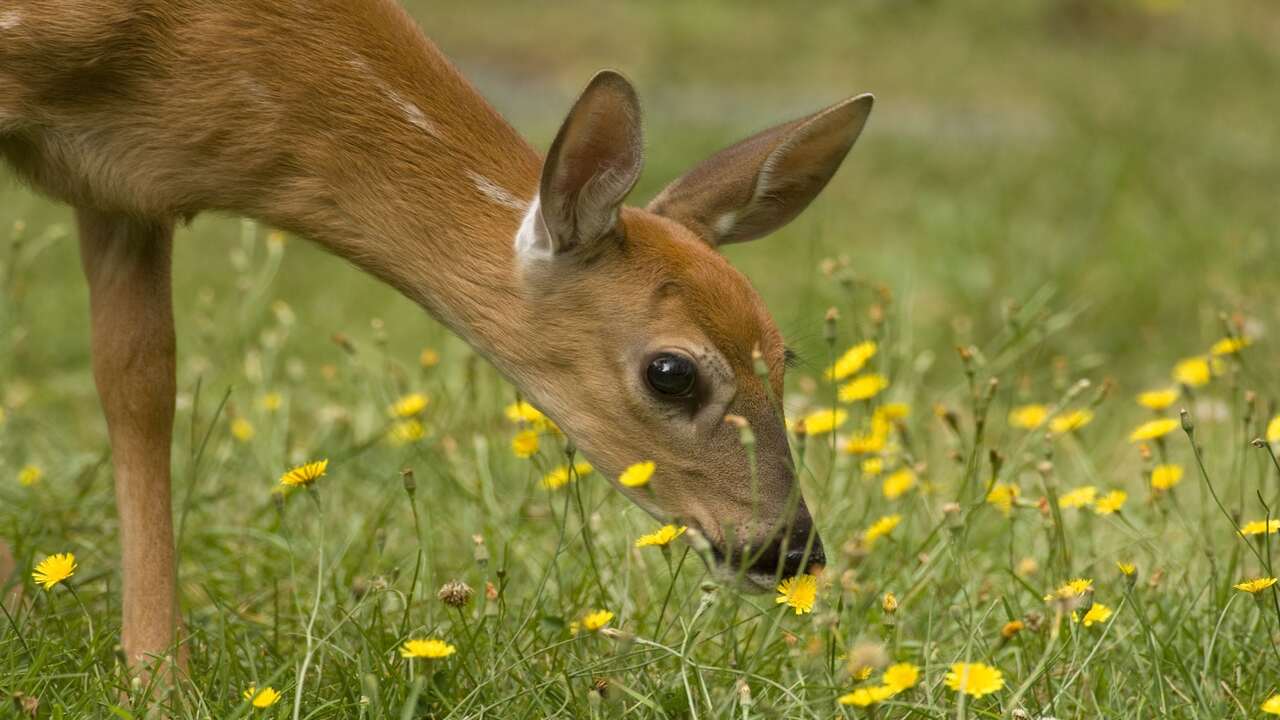
Russian Sage, also known by its scientific name Perovskia atriplicifolia, is a stunning perennial that adds beauty and fragrance to any garden. Its silvery-green foliage and tall flower spikes make it stand out in the garden. Russian Sage blooms from early summer to late summer, producing delicate white flowers that attract bees and butterflies.
This hardy plant is resistant to deer and other pests, making it a top pick for gardens. Its drought-tolerant nature and ability to thrive in full sun make it a great choice for various landscapes. Russian Sage requires minimal maintenance, including pruning in early spring to promote new growth. It’s no wonder why this beautiful deer-resistant perennial is a favorite among gardeners.
4. Catmint
Catmint, also known as Nepeta, is popular for gardeners looking to add beauty and fragrance to their landscape. This perennial plant features green foliage and produces clusters of delicate white and lavender flowers in early summer.
Catmint is stunning and deer-resistant, making it a great choice for gardens where deer are a problem. It is a hardy plant that thrives in both full sun and partial shade and can withstand frost and harsh winter conditions. With its attractive blooms and resistance to deer, catmint is a top pick for any garden.
5. Coneflowers
Coneflowers, also known as Echinacea, are a popular choice for any garden. With their beautiful and vibrant colors, they add a touch of charm to any landscape. These perennial plants bloom from early summer to late summer, attracting bees, butterflies, and other pollinators with their nectar-rich flowers.
Coneflowers are also deer-resistant, making them a good choice for gardens where deer may be a nuisance. They are hardy and can withstand frost, making them a top pick for gardeners looking for low-maintenance and beautiful deer-resistant plants.
6. Salvia
Salvia is a vibrant deer-resistant perennial that brings a burst of color to your garden. This drought-tolerant plant is beautiful and attracts pollinators like bees and butterflies. With its long bloom time from late spring to early fall, Salvia is a top pick for gardeners. Its fragrant foliage and vivid blooms make it a favorite among hummingbirds. Thriving in full sun and well-drained soil, Salvia adds a touch of beauty to any garden.
7. Black-Eyed Susans
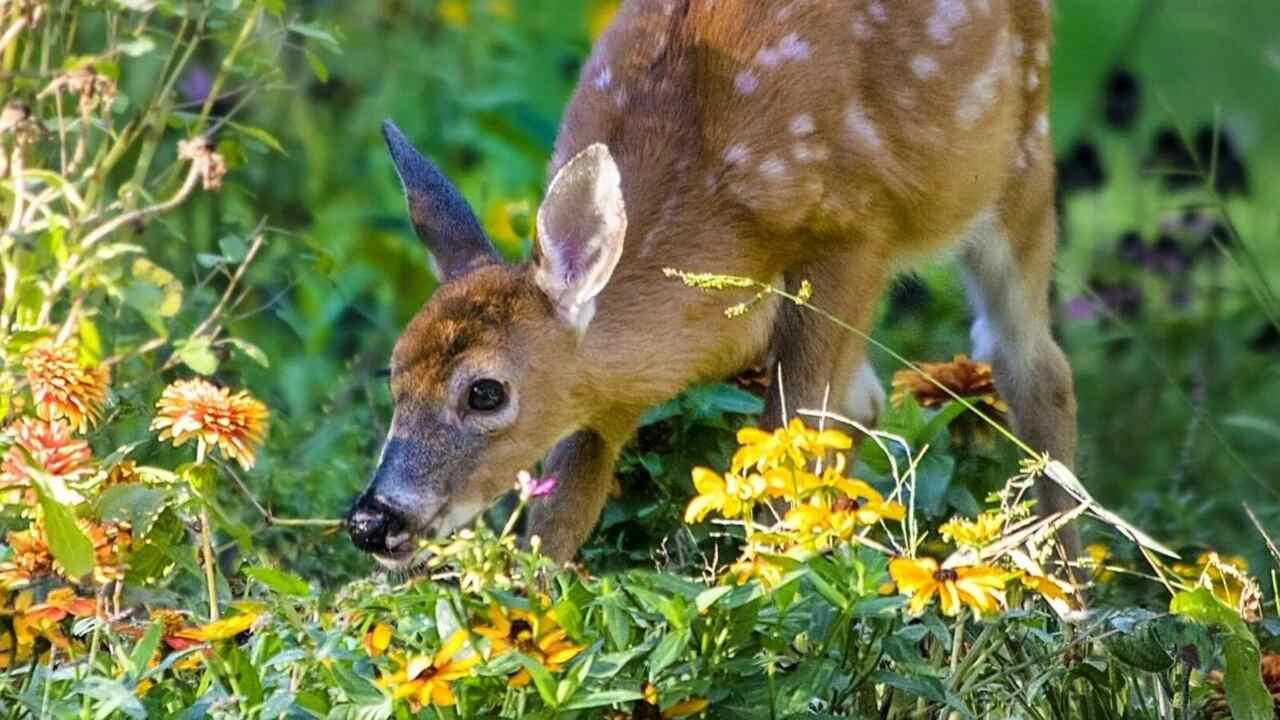
Black-Eyed Susans are stunning deer-resistant perennials with vibrant yellow flowers. These hardy plants bloom from midsummer to early fall, bringing color to any garden. They are a low-maintenance option, as they can tolerate drought and require minimal care.
Black-eyed Susans are especially popular in cottage gardens and attract beautiful pollinators like butterflies. Their long-lasting blooms are also frequently used in cut flower arrangements. So, if you’re looking for a beautiful, deer-resistant plant that will add color and charm to your garden, Black-Eyed Susans are a top pick.
8. Yarrow
Yarrow, a versatile perennial with feathery foliage and clusters of tiny flowers, is a popular choice for gardeners looking to add beauty to their landscapes. Available in white, pink, and yellow, this plant thrives in full sun and well-drained soil, making it perfect for dry areas.
With its long bloom time, attractive green foliage, and resistance to pests, yarrow is a stunning addition to any garden and an attractor of pollinators. Its medicinal properties and hardiness make it a good choice for gardening enthusiasts and nature lovers.
9. Daylilies
Daylilies, known for their stunning and vibrant flowers, are popular for gardeners looking for beautiful deer-resistant perennials. These hardy plants bloom in early to mid-summer, adding a splash of color to the garden. With their low maintenance needs and ability to tolerate various growing conditions, daylilies are versatile and easy to care for. Whether used as borders, mass plantings, or focal points in the garden, daylilies are sure to impress with their long-lasting blooms.
10. Lungworts
Lungworts, or Pulmonaria, are stunning deer-resistant perennials that add beauty to your shade garden. Their unique spotted foliage and colorful flowers create a vibrant and eye-catching display. They bloom in late winter or early spring, providing early-season color when most other plants are still dormant. Lungworts are tolerant of dry shade conditions and resistant to deer browsing. They attract important pollinators like bees and butterflies, making them valuable to any garden.
Maintenance And Care Tips For Deer Resistant Perennials
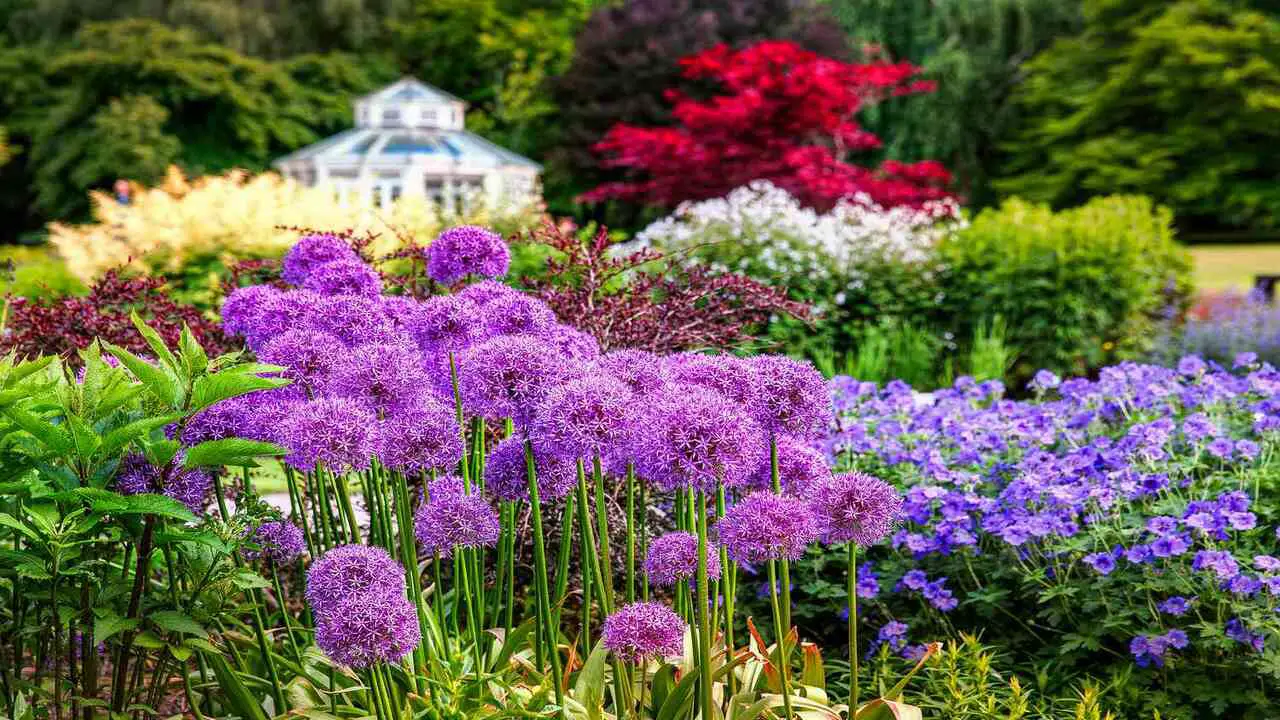
Maintaining and caring for deer resistant perennials is essential to ensure their longevity and beauty in your garden. By following these maintenance and care tips, you can enjoy a beautiful garden filled with deer resistant perennials that will continue to thrive year after year. Here are some tips to help you keep your deer resistant perennials thriving:
- Watering: Regularly watering keeps the soil moist, but be careful not to overwater, as this can lead to root rot. It is best to water deeply and infrequently rather than shallowly and frequently.
- Fertilizing: Apply a balanced spring or early summer fertilizer to promote healthy growth. Be sure to follow the instructions on the fertilizer package for proper application rates.
- Pruning: Regularly prune dead or damaged foliage to maintain the overall health of the plants. This will also help prevent disease and encourage new growth.
- Mulching: Apply a layer of mulch around the base of the plants to help retain moisture, suppress weeds, and regulate soil temperature.
- Pest control: While these perennials may deter deer, other pests such as rabbits or insects, may still pose a threat. Monitor your plants regularly for any signs of pest damage and take appropriate measures, such as using organic insecticides or physical barriers if necessary.
Combining Deer Resistant Perennials For Beautiful Gardens
When designing your garden with deer-resistant perennials, creating a visually appealing space is essential by combining plants with complementary hues. Varying plant heights and textures add an extra layer of visual interest. Consider including evergreen shrubs to provide year-round structure and appeal. Incorporate perennials with different bloom times to maintain continuous color throughout the season.
Finally, planting in groups or drifts creates impact and mimics natural growth patterns. By following these tips, you can create a beautiful and deer-resistant garden that will be the envy of your neighborhood.
Troubleshooting Common Issues With Deer Resistant Perennials
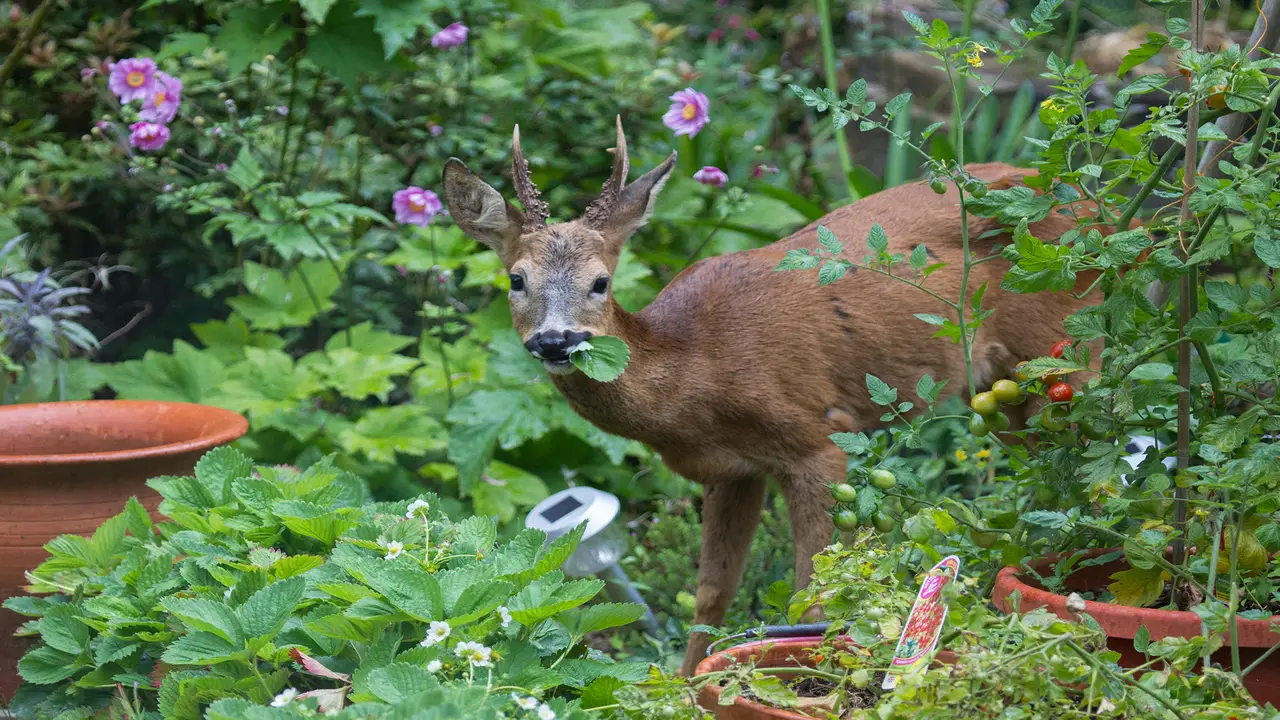
Deer-resistant perennials can be a great addition to any garden, as they help to deter deer from munching on your plants. However, there are some common issues that you may encounter when growing these types of plants. Here are a few troubleshooting tips to help you address these issues:
- Fencing: If you’re still experiencing deer damage despite planting deer-resistant perennials, consider installing a fence around your garden. This can provide additional protection and help keep the deer out.
- Repellents: Sometimes, deer may still find their way into your garden, even with deer-resistant plants and fencing. In these cases, using a repellent can be helpful. Many different types of repellents are available, including sprays and granules that can be applied directly to your plants.
- Companion Planting: Another strategy to try is companion planting. Certain plants have natural scents or properties that repel deer. Consider planting these alongside your deer resistant perennials to provide an extra deterrent.
- Rotate Plantings: If you notice that deer consistently target certain perennials, try rotating your plantings. Deer tend to become less interested in plants over time, so by switching things up, you may be able to reduce their attraction to specific plants.
Remember, no plant is completely foolproof when it comes to deterring deer. However, by implementing these troubleshooting tips and selecting deer-resistant perennials for your garden, you can greatly reduce the likelihood of deer damage and enjoy the beauty of your flowers for years.
Conclusion
Creating a garden with deer-resistant perennials not only adds beauty and variety to your landscape but also solves the problem of deer damage. By understanding deer behavior and plant preferences, selecting the right location, and designing a deer-resistant garden, you can create a space that is aesthetically pleasing and protected from deer browsing.
Additionally, maintaining and caring for these perennials and troubleshooting common issues will ensure the longevity and success of your garden. So combine these beautiful deer-resistant perennials and enjoy a thriving garden while keeping those pesky deer at bay. We hope you understand the best beautiful deer resistant perennials.
Frequently Asked Questions
1.What Flowers Will The Deer Absolutely Not Eat?
Ans: Some deer-resistant perennials that deer tend to avoid include lavender, salvia, yarrow, and coreopsis. Plants with strong fragrances or fuzzy foliage are less likely to be eaten. Other options include black-eyed Susans, coneflowers, and daylilies. While no plant is entirely deer-proof, choosing the right varieties can help minimize damage to your garden.
2.What Hydrangeas Are Deer Resistant?
Ans: Hydrangeas are not typically considered deer-resistant, but some varieties, such as “Limelight,” “Annabelle,” and “Incrediball,” have been reported to be less attractive to deer. It’s important to note that hungry deer can still eat deer-resistant plants in certain circumstances.
To help reduce the chance of deer damage, consider using additional methods of garden protection, such as fencing or repellents.
3.Do Deer Eat Black Eyed Susans?
Ans: Black-eyed Susans are, unfortunately, on the menu for deer. However, planting them alongside deer-resistant perennials like lavender, yarrow, and Russian sage can help deter deer from snacking on your garden.
4.What Flowers Are Perennials And Deer Resistant?
Ans: Some deer-resistant perennial flowers include lavender, salvia, yarrow, and coneflowers. Other options are catmint, Russian sage, foxgloves, and daylilies. These plants have natural chemicals that make them unpalatable to deer. However, using multiple methods for deterring deer is important as no plant is completely deer-proof.
5.What’s The Most Low-Maintenance Way To Landscape?
Ans: There are many low-maintenance ways to landscape, depending on what’s best for your situation and garden. Some suggestions include choosing plants native to your area, grouping plants with similar watering needs together, using mulch to reduce weed growth and retain soil moisture, and incorporating hardscaping elements like rocks or pathways to add visual interest without requiring much maintenance.
